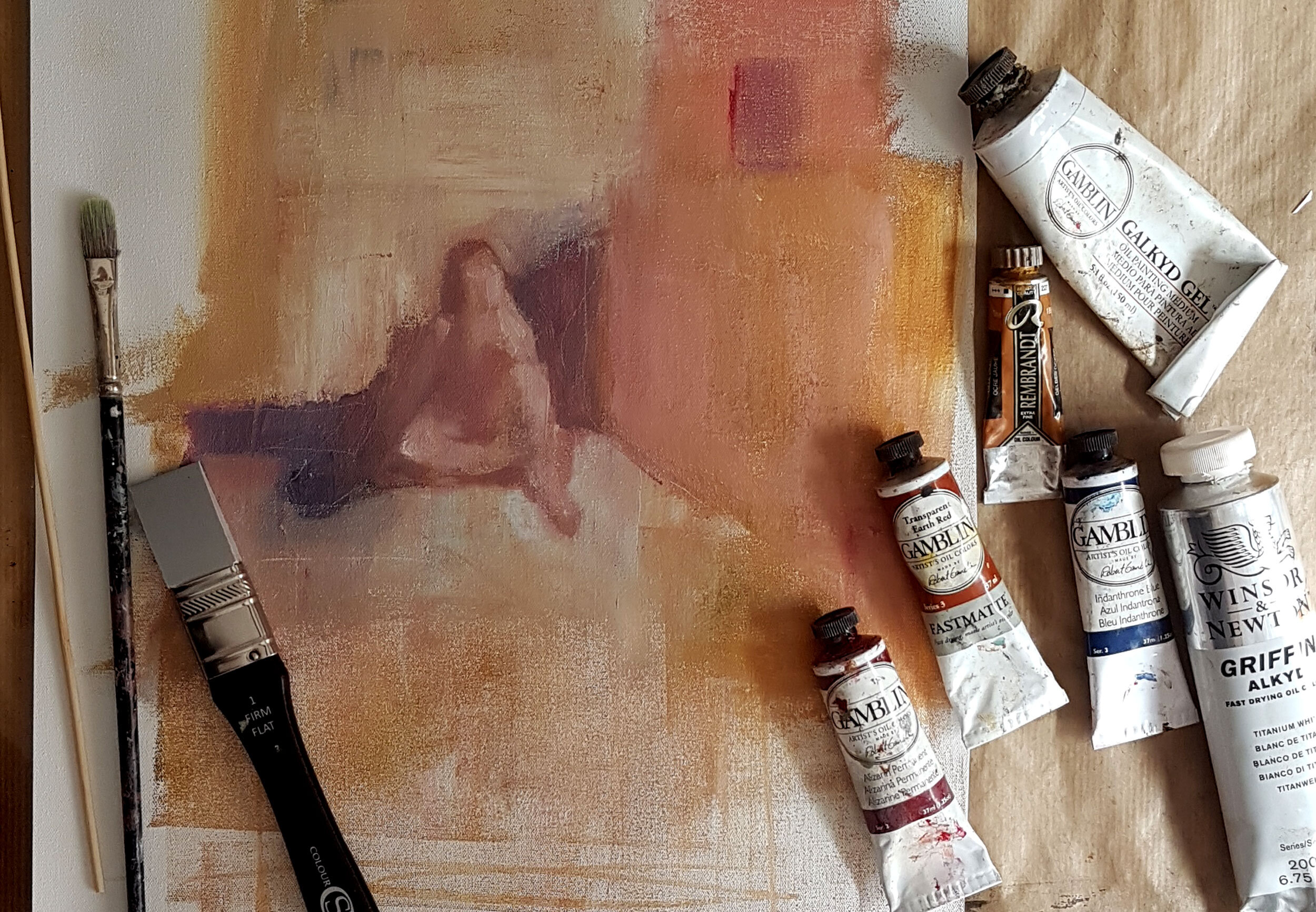The Power of Constraints
I painted this during a recent Zoom class with Martin Campos, using a very limited set of tools and materials.
This past year and a half has been full of constraints – where we can go, who we can see, how we can do business – and I know we’re all dreaming of breaking free. But one thing that the Covid Pandemic has shown is that constraints can also have an up-side. Creativity is often spurred as we are forced to overcome obstacles by exploring new possibilities and finding innovative ways of doing things. As hard as the pandemic was (and still is) on artists, there have been some benefits, like Matthew Burrows’ development of the Artist Support Pledge and the growth of online galleries and exhibits. I’ve definitely benefited from greater access to life models through Zoom drawing sessions and I’ve been able to take classes with great teachers from all over the world.
Over the last several months, I’ve been working to bring the benefits of constraints into my art practice. When it comes to limitations I am – probably like most artists – a bundle of contradictions. I know about the benefits of working with limited materials but I also want unlimited choice and possibilities. Bring on the huge collection of paint colors, the inks, the pens, the box of mark making tools – and then throw in some gold foil and pigment powder for good measure!
Sometimes I need help in reining myself in and getting rid of distractions so that I can see and think more clearly. I’ve been helping myself fight the urge for more by packing away my paint tubes and other supplies and only taking out and using a few things at a time. I’ve also been taking classes in areas where I want to stretch my skills and have been working with limited materials for each class.
Harnessing the power of constraints: These are some of the over thirty paintings that Monet did of the same view of the Rouen Cathedral between 1892 and 1894.
The Down-Side of Choice and The Up-Side of Limitation
Given my background in psychology, it also helps to remind myself that experiments in psychology and decision making tend to support the idea that less can be more.
Not only can the physical clutter that comes with being surrounded by lots of art materials be mentally fatiguing, but the process of choosing among all those materials also has a mental cost. Kathleen Vohs, at the University of Minnesota, and her colleagues demonstrated this in a series of experiments that showed that the more decisions people had to make – for example, choosing products at a grocery store from a wide range of options – the less mental energy they had to do things that required focus, like solving math problems.
Having to make decisions can also leave us feeling less motivated. That’s what happened to the students in a study done by Sheena Iyengar, from Columbia University, and Mark Leper, from Stanford University: Students who had 30 essay topics to choose from were less likely to actually complete the essay than were the students who only had six essay topics to choose from. What’s more, the students with fewer choices wrote better essays on average than those with more choice.
Of course, making art is different from choosing groceries or writing essays. What about fun choices, like choosing among a big selection of paint colors? Unfortunately, another experiment done by Iyengar and Leper – this time with chocolate – shows that even enjoyable decisions come at a price. People who got to choose a chocolate from thirty different varieties enjoyed the process more than those who only had six varieties to choose from, but they were also left feeling more overwhelmed. What’s more, the people choosing from thirty chocolates tended to be less satisfied with their choice than the people choosing from only six.
There’s a parallel here with artists who can’t help but buy more and more paint colors even though choosing among all those colors when painting can be overwhelming and may lead to less coherent finished pieces (I am guilty of this!). It’s a paradox. We desire more choice, we desire more possibilities, and we often enjoy the process of choosing (what artist doesn’t love wandering the aisles of a favorite art store). And yet, the very act of having to choose among many options once back in the studio can leave us more mentally fatigued, less motivated and less satisfied than we would be if we had fewer options. And like the essay writers in the study mentioned above, it might also have a negative impact on the quality of our work.
Monet seemed to intuitively understand the power of limited choice in creating art and he regularly gave himself constraints so that he could focus more deeply on the elements that most interested him. He often painted the same subject using the same materials over and over again so that he could focus on how changes in the time of day and in the seasons affected light, color, and visibility. Many of his most famous paintings, like his Haystacks, Water Lilies, and Rouen Cathedral series are the result of these self-imposed limitations.
We could all learn something about constraints and limitations from Monet. I know that I need the occasional reminder to curb my desire for more in order to reap the benefits of less.
How about you – do you like working with infinite possibilities or with constraints?
I, for one, am off to pack away a few more art supplies and clean up my studio!


